Terracotta Warriors, China
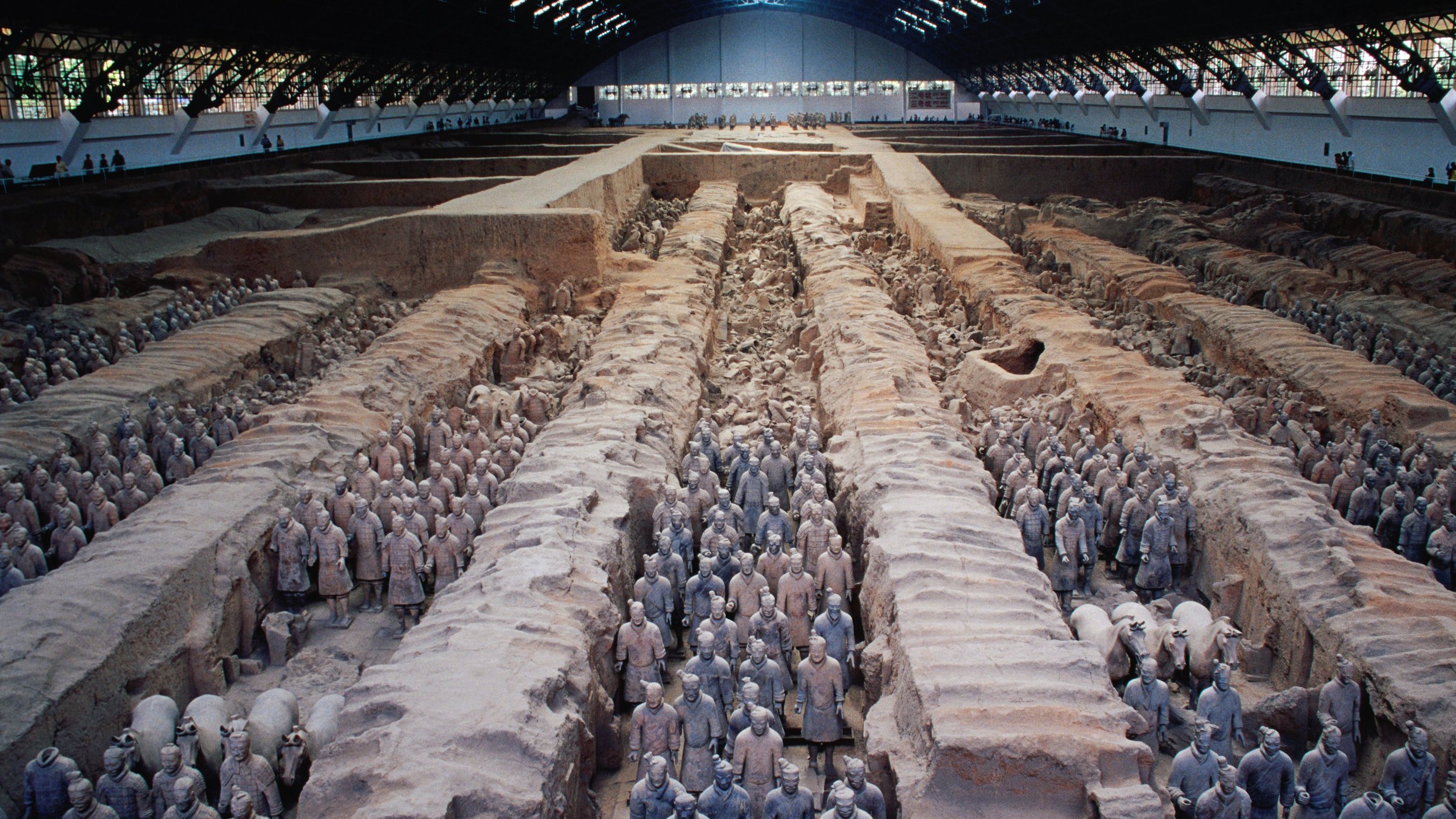
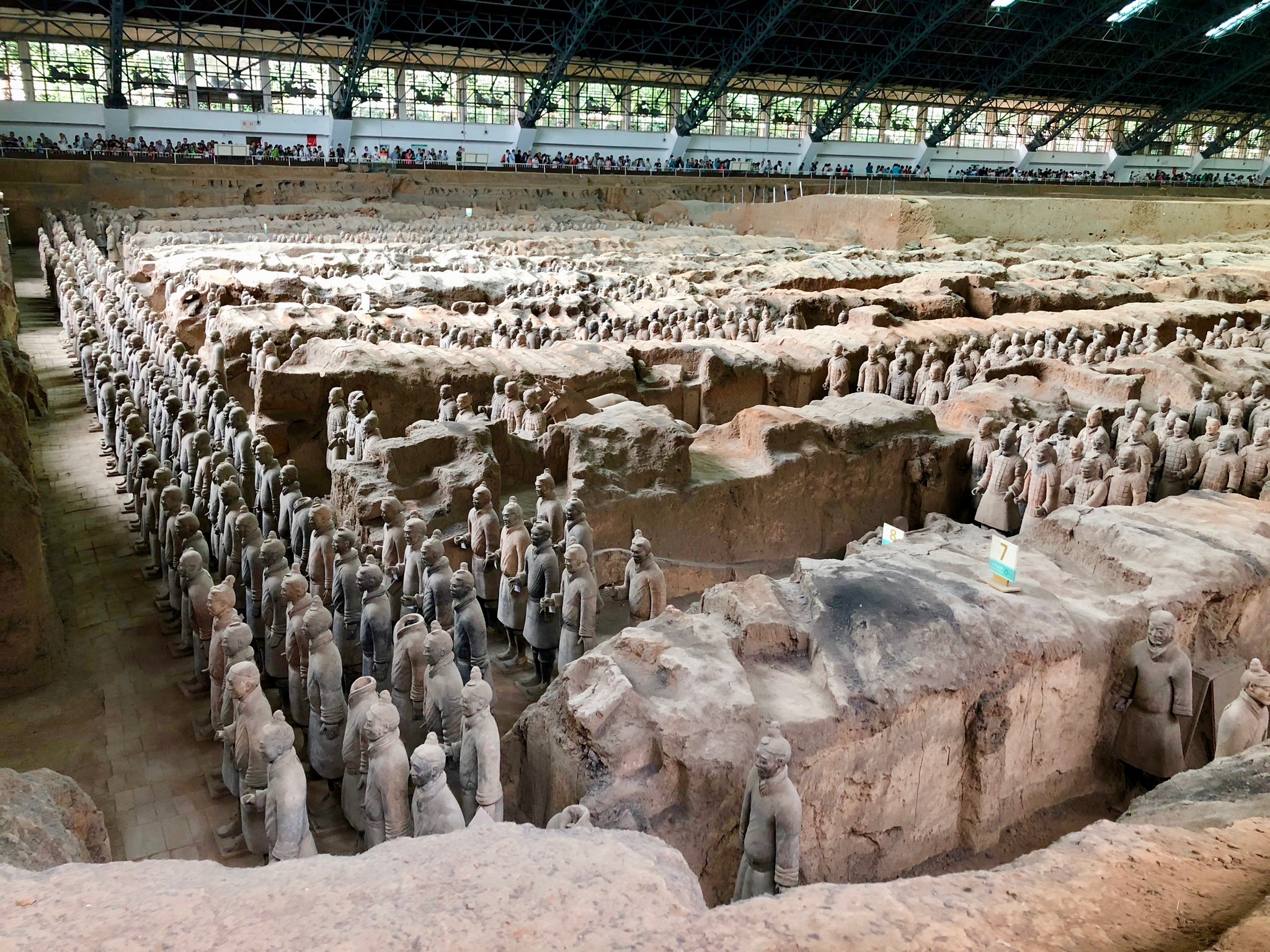
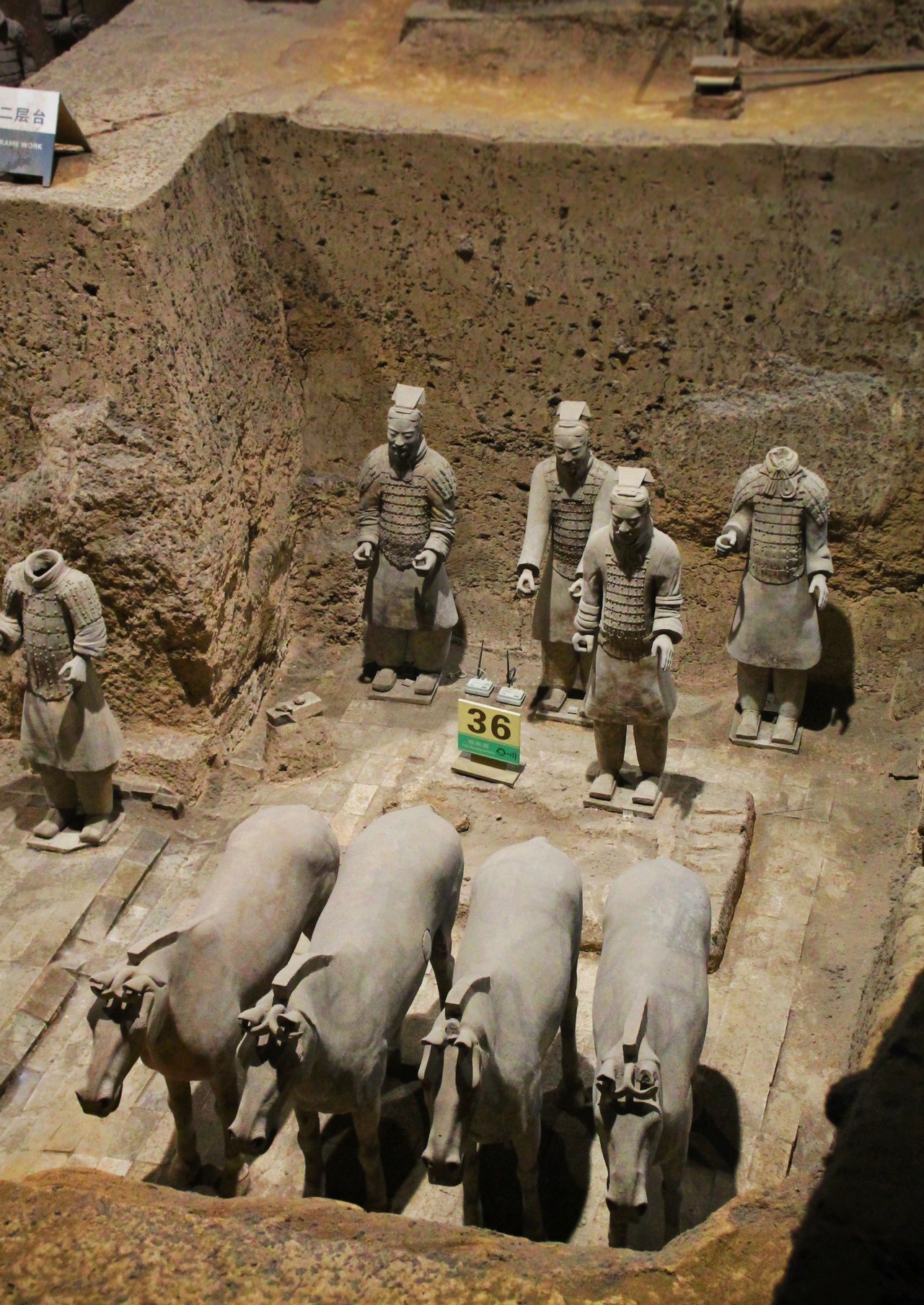
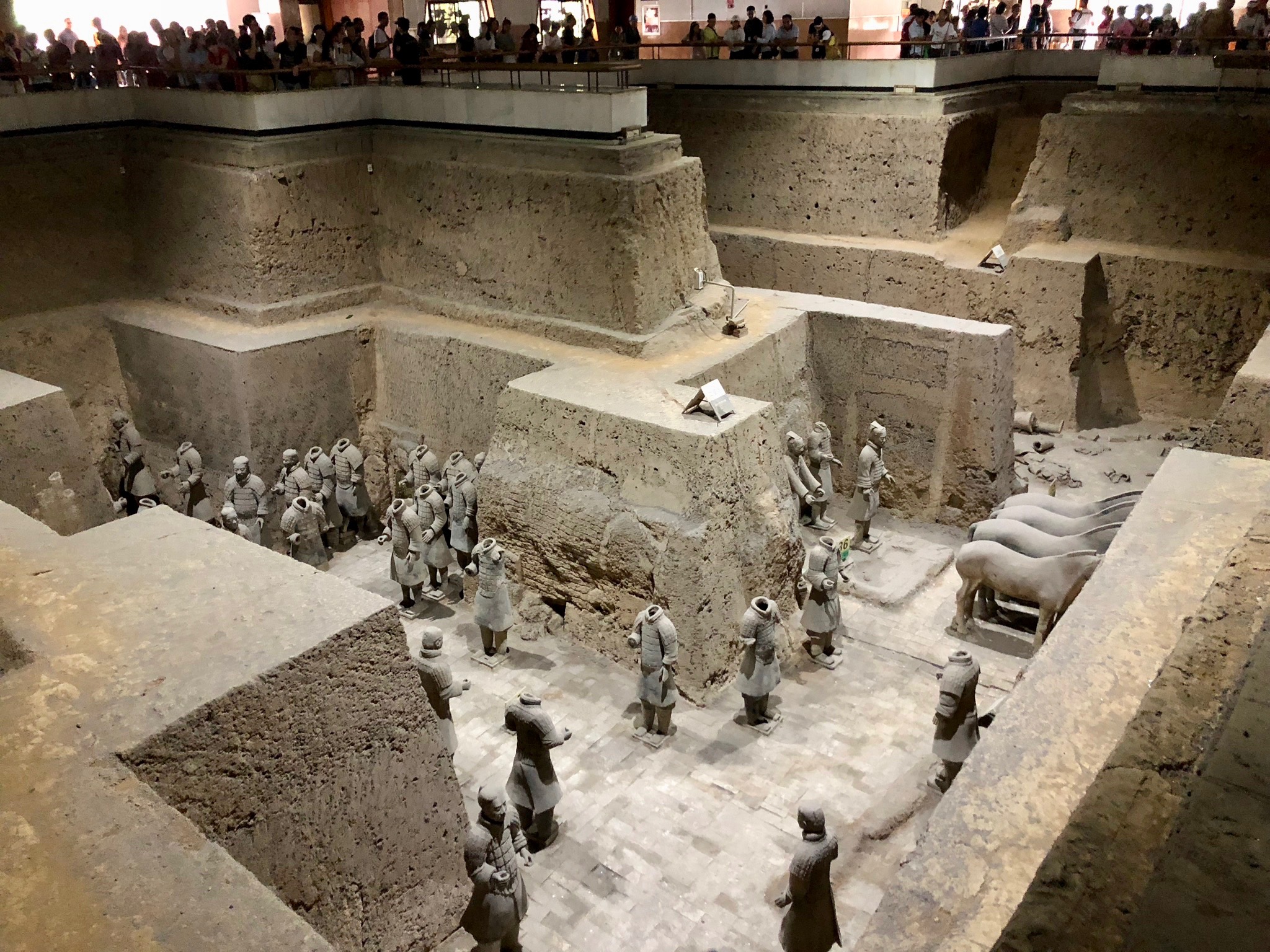
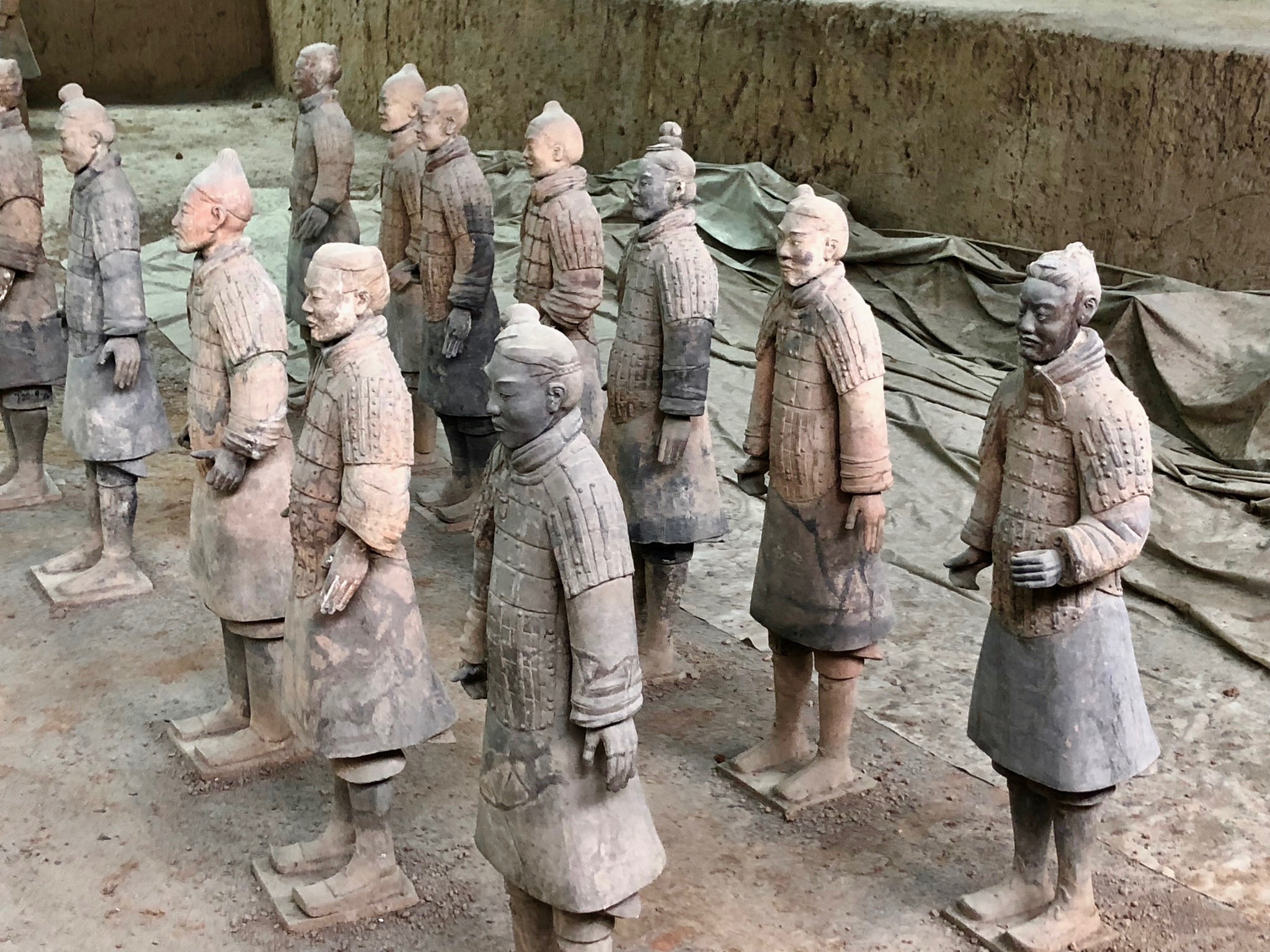
Visiting the Qin Tomb Terracotta Warriors in Xi’an is a life changing experience. It is considered to be one of the greatest archaeological sites in the world and one of the greatest discoveries of the 20th Century.
When the first emperor of China, Qin Shi Huangdi ascended the throne at the age of 13, he began the construction of his tomb. As his power and popularity as an Emperor grew, he felt the need to have his army buried with him, to continue protecting and serving him in the after-life. The army’s generals did not appreciate the idea of being buried alive with their Emperor. Instead, they convinced the Emperor that burying so many men and horses alive would only damage his legacy and counselled him to have a replica army constructed out of Terracotta to accompany the tomb.
The Emperor commissioned the construction of thousands of detailed, life-size terracotta soldiers and horses. Each warrior stands at about 1.8 metres tall and weighs about 160 kilograms. A hollow torso, solid head, arms and legs were all created separately and then assembled and fitted with all manners of weaponry. The warriors and horses were all built by hand by more than 700,000 artisans and labourers. Every figure looks different and unique, just like the real soldiers they were designed to replicate and as a result the army took around 40 years to complete.
To see the warriors, you will need at least half a day. We were escorted by a local Chinese historian, who was able to give us a tour that was not only full of great historic detail but also shared with us the local stories. The museum consists of three pits and an exhibition hall. Pit 1 is the largest and most impressive. It is rumoured to contain over 6000 terracotta figures, including soldiers and horses. Pit 2 shows off soldiers and horses set up in battle formation. Pit 3 is the smallest of the 3 and replicated a Command Post. There are only 68 terracotta figures, most without heads. The exhibition hall houses the two bronze carriages discovered in the Tomb in December 1980, both have been restored for exhibition.
Even though the site is often swarmed by tourists, take the time to really appreciate each of the pits. There is a lot of walking involved in visiting this site, but there are wheel-chair facilities and also care is taken for the elderly.
Getting there
The tomb of Qin Shi Huang is located in the easter suburbs of Lintong County, roughly 40 kilometres east of Xi’an. There are many ways to get to the Terracotta Army Museum. From either Downtown Xi’an, the airport and railway station you can take Tourist Bus Line 5 (Bus 306) which leaves from the Xi’an Railway Station, or from the East Square at Xi’an Railway Station you can also catch Bus 914 or 915.
However, if you are at the North Railway Station, you can also take the Free Shuttle Bus which stops at the West Square. The final option is to arrange a private or group tour. The benefits of a tour include, your own guide, driver and vehicle, a visit to the attraction without any detours, skipping the long line, a closer and more informative view of the Terracotta Army.


